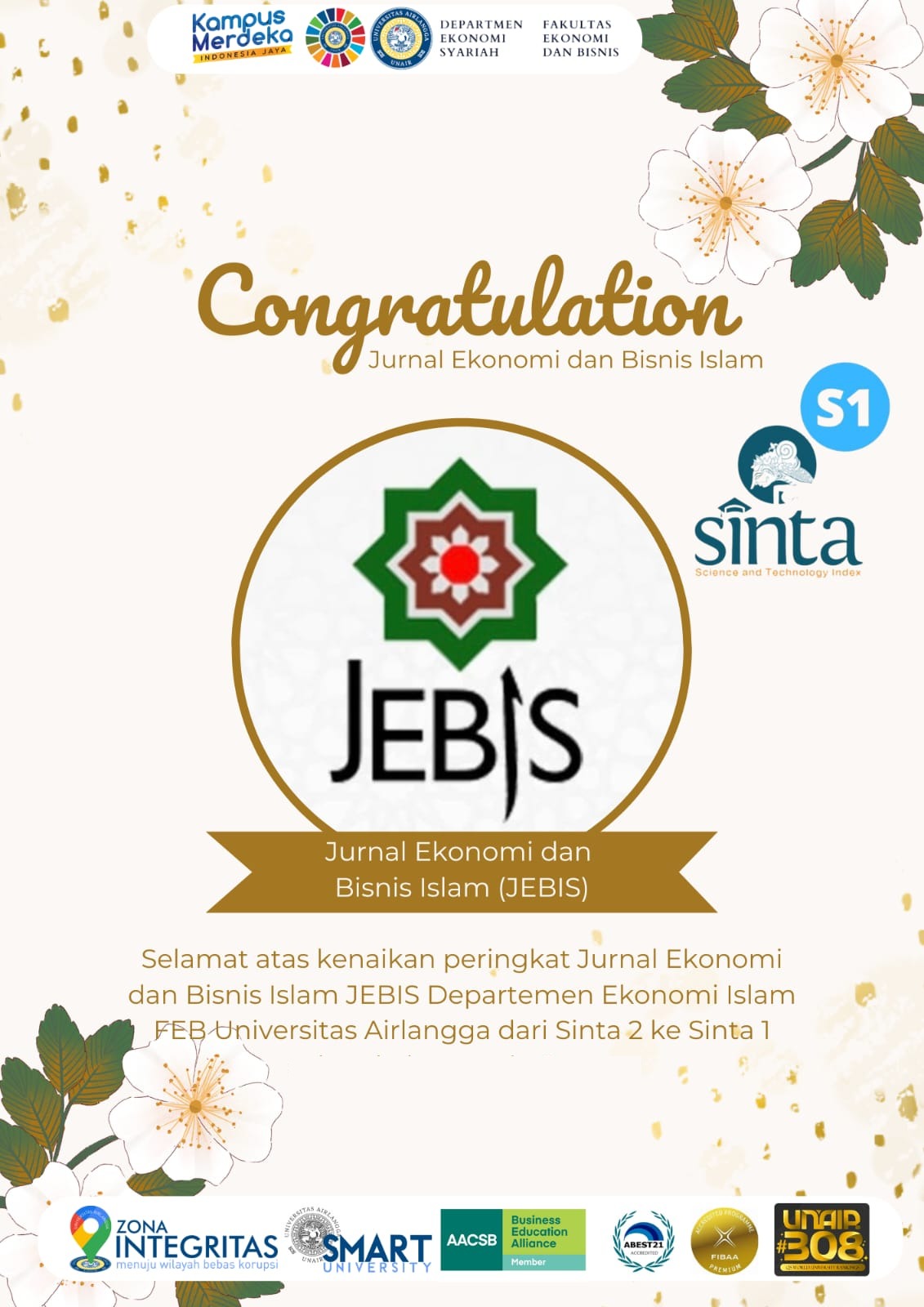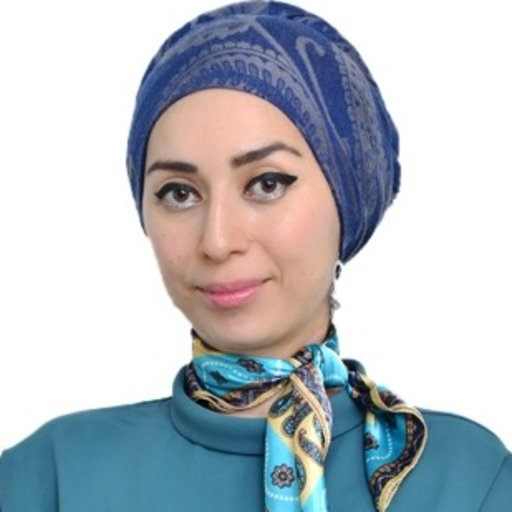THE IMPACT OF ISLAMIC MONETARY OPERATIONS AND AGGREGATE FINANCING ON ECONOMIC GROWTH IN INDONESIA (2010-2020)
Downloads
Ali, I. H. (2017). Ekonomi Makro. Kencana Prenadamedia.
Andarini, M. A., & Widiastuti, T. (2016). The Influence of SBIS and PUAS on Inflation Rate Through Sharia Monetary Operations in the 2011-2015 Period [Pengaruh SBIS dan PUAS terhadap Tingkat Inflasi melalui Operasi Moneter Syariah pada Periode 2011-2015]. Jurnal Ekonomi Syariah Teori Dan Terapan, 3(6). https://doi.org/10.20473/vol3iss20166pp474-489
Basuki, A. T. (2018). Application of VAR and VECM Models in Economics. Muhammadiyah University Publishing.
Bayuni, E. M., & Srisusilawati, P. (2018). Contribution of Sharia Monetary Instruments to Inflation Control in Indonesia [Kontribusi Instrumen Moneter Syariah terhadap Pengendalian Inflasi di Indonesia]. Amwaluna: Jurnal Ekonomi Dan Keuangan Syariah, 2(1), 18–38.
Creswell, J. W. (2012). Research Design Approach to Qualotative, Quantitative, and Mixed Methods (3rd ed.). Sage Publications.
Fitriani, Y., Aziz, R. M., & Amalia, F. (2012). Linkage of Sharia Monetary Indicators to Gross Domestic Income [Keterkaitan Indikator Moneter Syariah terhadap Pendapatan Domestik Bruto]. Signifikan: Jurnal Ilmu Ekonomi, 1(1). https://doi.org/10.15408/sjie.v1i1.2595
Juhro, S. M., Darsono, D., & Sakti, A. (2018). Kebijakan Moneter Syariah dalam Sistem Keuangan Ganda Teori dan Praktik. Tazkia Publishing.
Kuznets, S. (1995). Economic Growth and Income Inequality. The American Economic Review, 45(1), 1–28. https://www.jstor.org/stable/1811581
Laksana, K. U. (2020). Analysis of the Effectiveness of Sharia Monetary Policy Transmission on Inflation and GDP [Analisis Efektivitas Transmisi Kebijakan Moneter Syariah terhadap Inflasi dan GDP]. IAIN Salatiga.
Latumaerissa, L. (2017). Bank dan Lembaga Keuagan Lain: Teori dan Kebijakan. Mitra Wacana Media.
Naf'an, N. (2014). Ekonomi Makro: Tinjauan Ekonomi Syariah. Graha Ilmu.
Natsir, N. (2014). Ekonomi Moneter dan Perbankan Sentral. Mitra Wacana Media.
Raseuky, M. (2019). Pengaruh Instrumen Operasi Moneter Syariah Terhadap Pertumbuhan Ekonomi Di Indonesia Periode 2014-2018 [Universitas Islam Negeri Sumatera Utara Medan]. http://repository.uinsu.ac.id/6599/
Rivai, V., & Arifin, A. (2010). Islamic Banking: Sebuah Teori, Konsep, dan Aplikasi. Bumi Aksara.
Rusydiana, A. S. (2009). Hubungan Perdagangan Internasional dan Industri Keuangan Syariah Di Indonesia. Tazkia Islamic Finance and Business Review, 4(1), 47–60. https://tifbr-tazkia.org/index.php/TIFBR/article/view/30
Soemitra, A. (2017). Bank & Lembaga Keuangan Syariah (2nd ed.). Prenada Media.
Sukaman, R., & Kassim, S. H. (2010). Roles of the Islamic Banks in the Mtransmission Process in Malaysia. International Journal of Islamic and Middle Eastern Finance and Management, 3(1), 7–19. https://doi.org/10.1108/17538391011033834
Syapriatama, I. (2017). Transmisi Kebijakan Moneter Jalur Pembiayaan Bank Syariah di Indonesia. IQTISHADUNA, 8(2), 1–11.
Twinoburyo, E. N., & Odhiambo, N. M. (2018). Monetary Policy and Economic Growth: A Review of International Literature. Journal of Central Banking Theory and Practice, 7(2), 123–137. https://doi.org/10.2478/jcbtp-2018-0015
Wibowo, M. G., & Mubarok, A. (2018). Analisis Efektivitas Transmisi Moneter Ganda Terhadap Pertumbuhan Ekonomi Indonesia. Jurnal Ekonomi Pembangunan, 25(2), 127–139. https://doi.org/10.14203/jep.25.2.2017.127-139
Zaelina, F. (2018). Mekanisme Transmisi Kebijakan Moneter Syariah. Indonesian Interdisciplinary Journal of Sharia Economcis, 1(1), 19–30. https://doi.org/10.31538/iijse.v1i1.69
Copyright (c) 2021 JEBIS (Jurnal Ekonomi dan Bisnis Islam)

This work is licensed under a Creative Commons Attribution-NonCommercial-ShareAlike 4.0 International License.
- Every manuscript submitted to JEBIS must obey to the policy and terms set by Journal of Economics and Business Islamic.
- Publication rights on the contents of manuscript published by JEBIS is owned by JEBIS under consent and approval by the corresponding author(s).
- Full text of electronic publication of manuscripts can be accessed free if used for the purpose of education and research according to copyright regulation.
- Share ” copy and redistribute the material in any medium or format
- Adapt ” remix, transform, and build upon the material
- You must give appropriate credit, provide a link to the license, and indicate if changes were made. You may do so in any reasonable manner, but not in any way that suggests the licensor endorses you or your use.
- You may not use the material for commercial purposes.
- If you remix, transform, or build upon the material, you must distribute your contributions under the same license as the original.
Creative Commons Attribution-NonCommercial-ShareAlike 4.0 International License.





.png)














